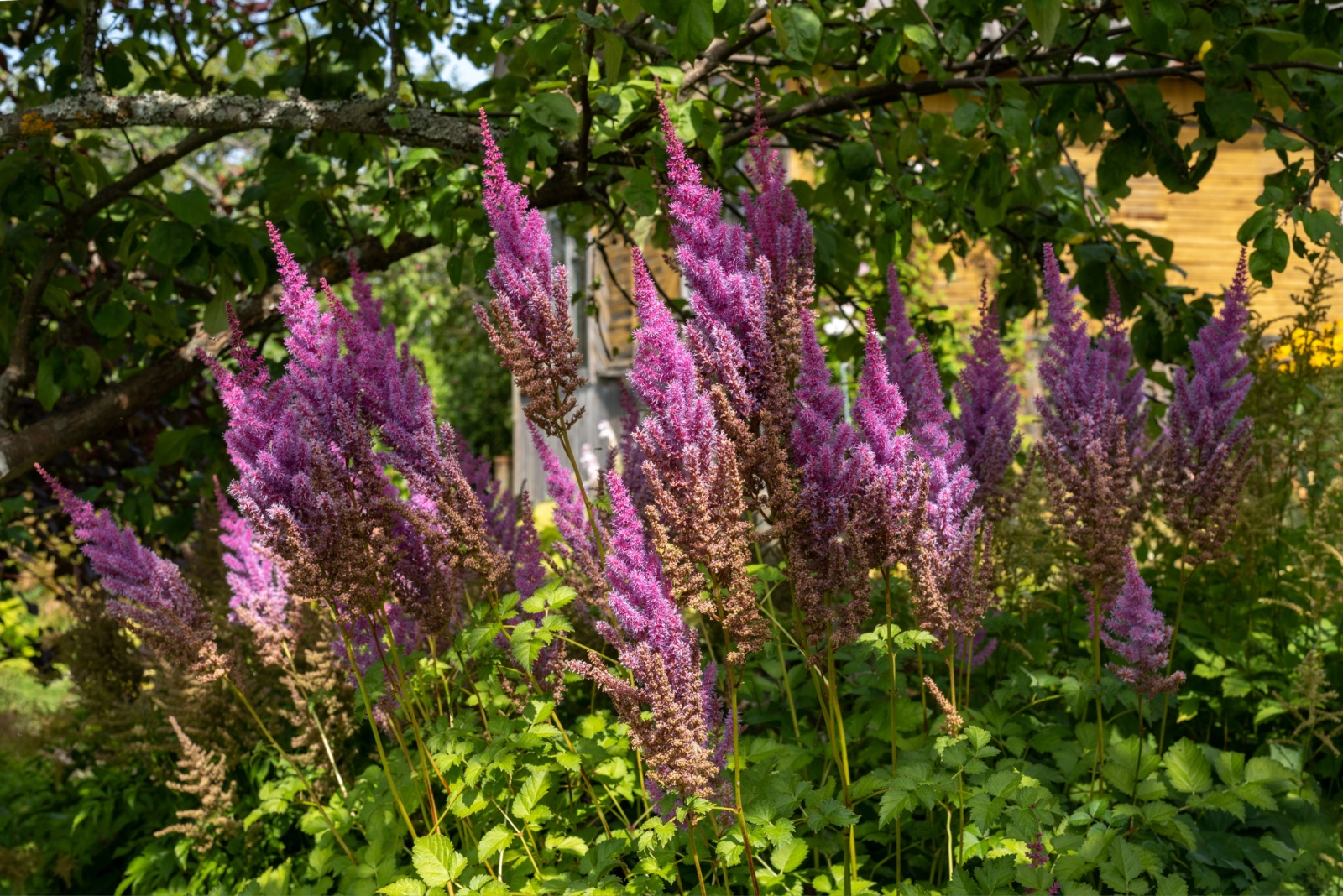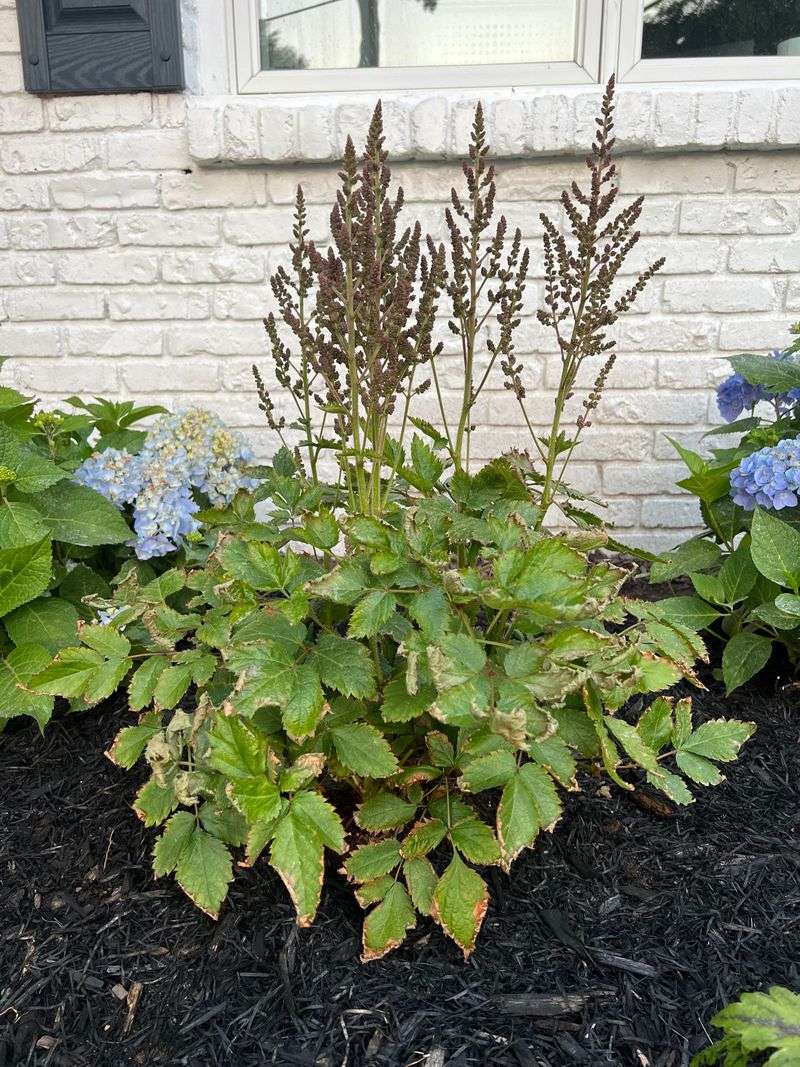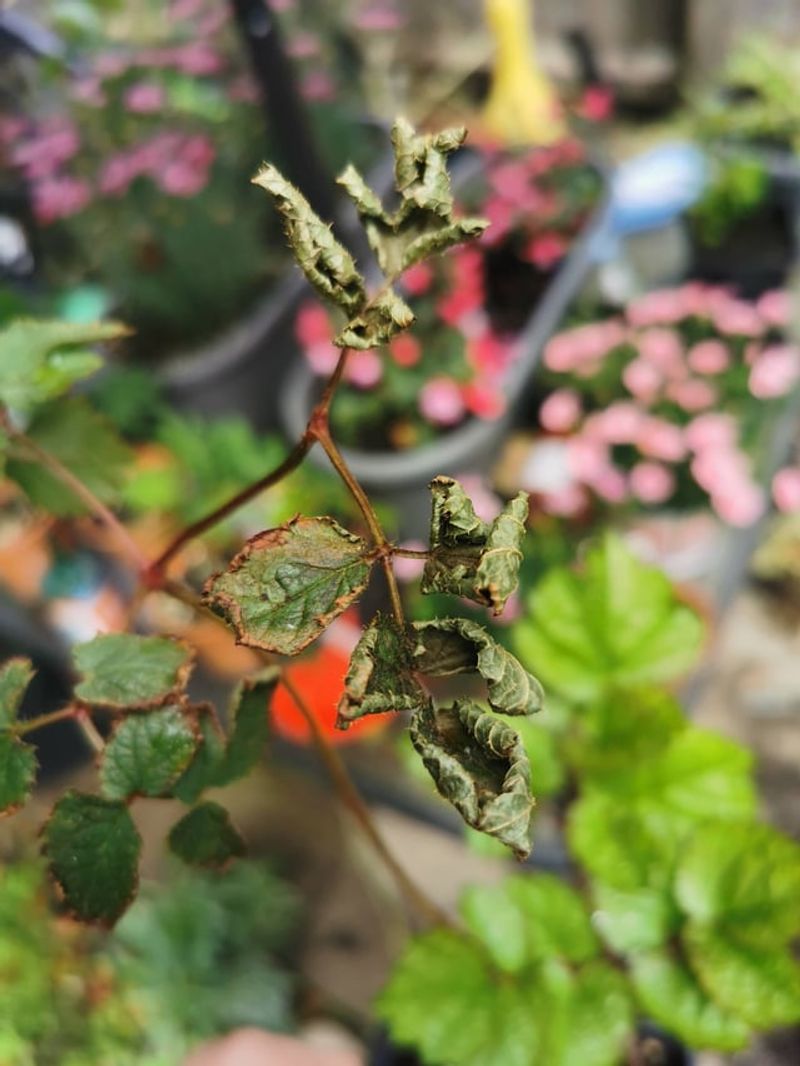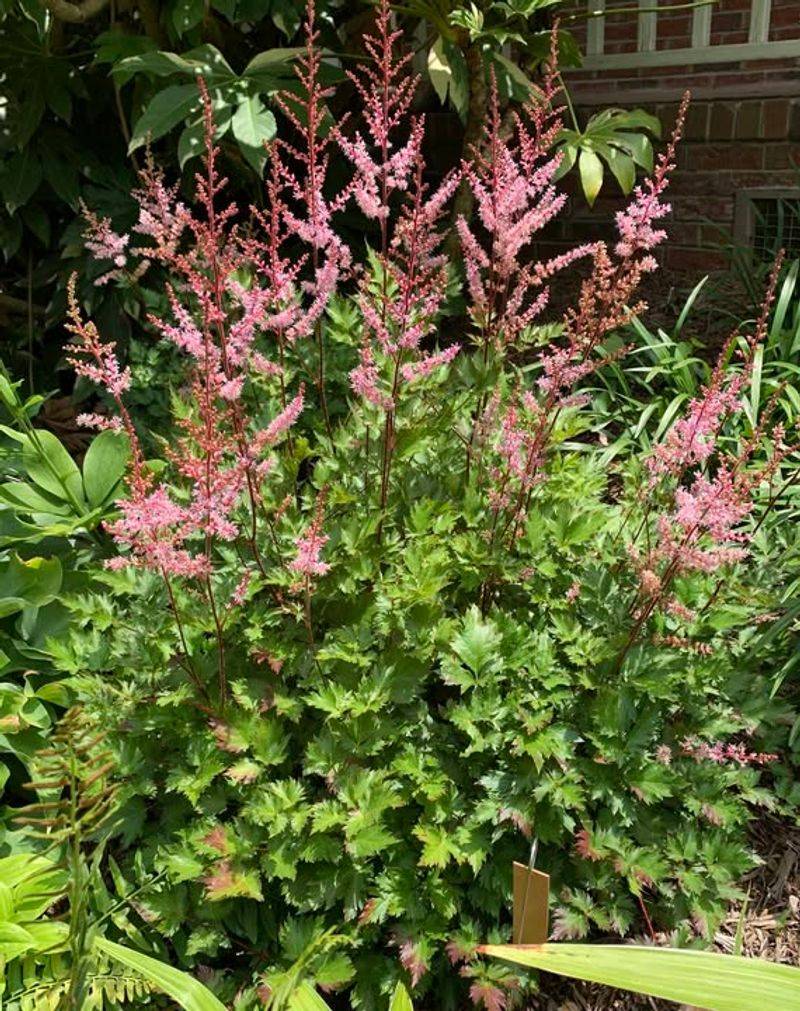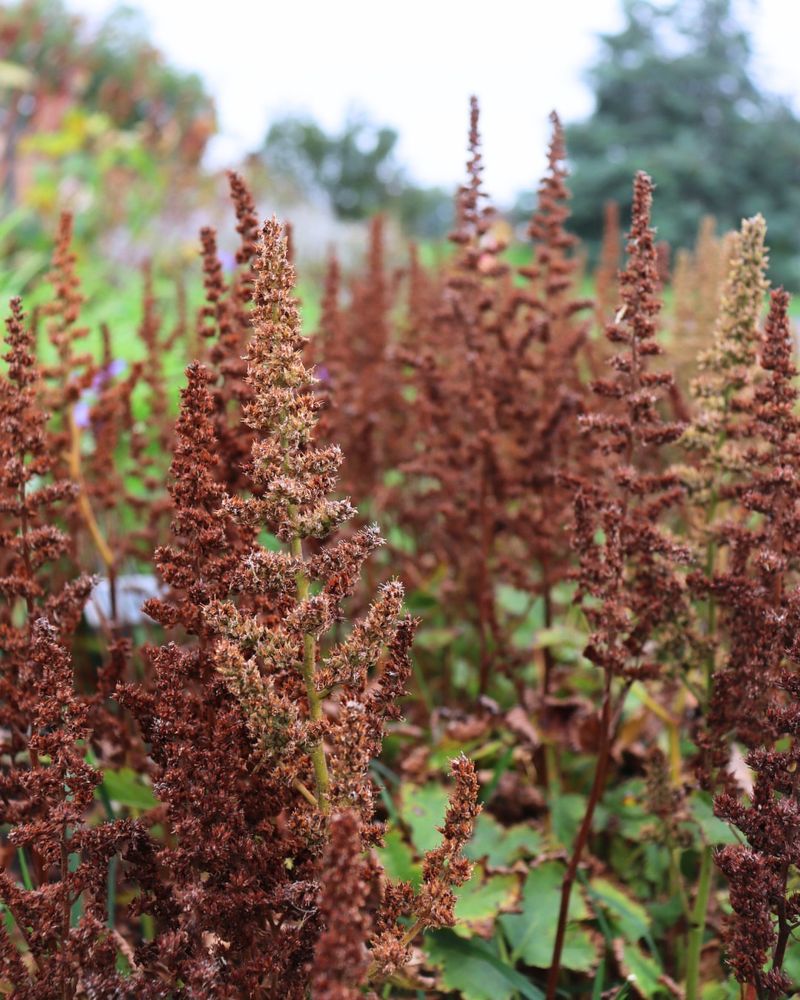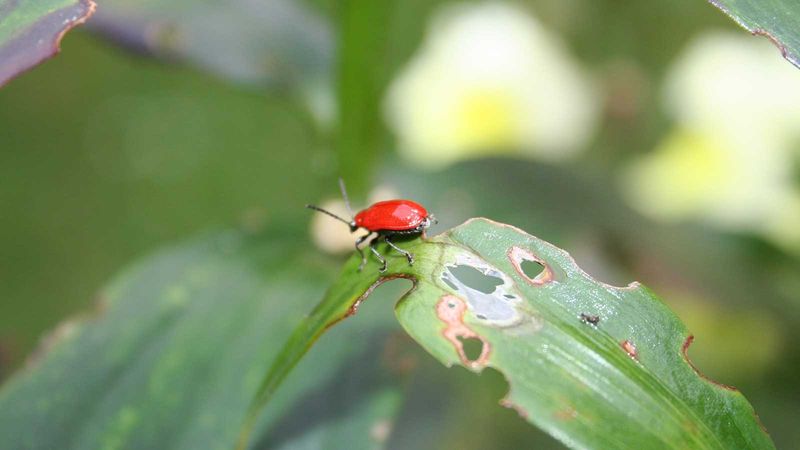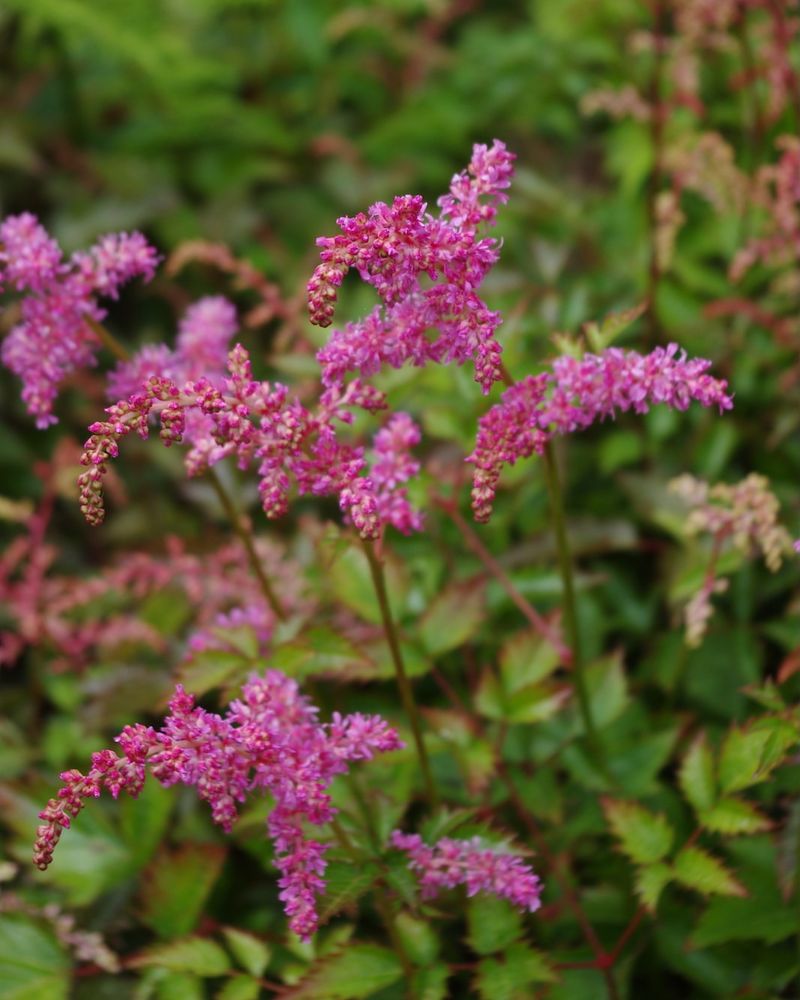Astilbe plants bring beautiful, feathery blooms to Michigan gardens all summer long, but they need special attention when fall arrives.
Getting these shade-loving perennials ready for winter helps them survive the cold months and come back even stronger next spring. With the right care routine, your astilbe will reward you with gorgeous flowers year after year.
1. Keep Watering Until The Ground Freezes
Fall might bring cooler temperatures, but your astilbe still needs consistent moisture right up until the first hard freeze. Many gardeners make the mistake of stopping their watering routine too early in autumn.
Michigan’s unpredictable fall weather can swing between rainy weeks and dry spells. Check the soil around your astilbe regularly by sticking your finger about two inches deep.
When it feels dry at that depth, give your plants a good soak. Well-hydrated roots handle winter stress much better than thirsty ones.
2. Leave The Foliage Standing Through Winter
Those brown, dried-up leaves might look messy, but resist the urge to cut them down right away. The dead foliage actually serves as natural insulation for the plant’s crown during Michigan’s harsh winters.
Snow and ice can pile up around the stems, creating a protective blanket that shields the roots from temperature swings. The seed heads also add interesting texture to your winter garden landscape.
Wait until early spring to trim everything back when new growth starts appearing at the base.
3. Add A Fresh Layer Of Mulch
A cozy blanket of mulch makes all the difference for astilbe surviving Michigan winters. Apply about three to four inches of organic material like shredded bark, wood chips, or compost around the base of each plant.
This layer helps regulate soil temperature and prevents the freeze-thaw cycles that can push plants right out of the ground. Make sure to keep the mulch a few inches away from the stems to prevent rot.
Mulch also helps retain moisture during those random warm fall days.
4. Divide Overcrowded Clumps Now
Early fall is actually the perfect time to divide astilbe that has gotten too big or stopped blooming as much. Plants older than three or four years often develop crowded root systems that compete for nutrients and water.
Use a sharp spade to dig up the entire clump, then gently pull or cut it into sections with at least three shoots each. Replant the divisions immediately at the same depth they were growing before.
Water them thoroughly and they’ll establish roots before winter arrives.
5. Skip The Fall Fertilizer Applications
Your astilbe needs to slow down and prepare for dormancy, not push out new growth. Fertilizing in fall sends the wrong signal to the plant, encouraging tender shoots that will just get zapped by the first frost.
Any nitrogen-rich fertilizer applied now can actually weaken the plant and make it more vulnerable to winter damage. Save your feeding efforts for early spring when the plant naturally starts its growth cycle again.
Compost added as mulch provides gentle nutrition without overstimulating growth.
6. Check For Pests And Disease Problems
Before winter sets in, take a close look at your astilbe for any signs of trouble. Powdery mildew sometimes shows up as white patches on leaves during humid Michigan falls, while bacterial leaf spots create dark, soggy areas.
Remove any diseased foliage and throw it in the trash, not your compost pile, to prevent spreading problems next year. Look under leaves for slugs or other pests hiding out.
Cleaning up now means healthier plants when spring rolls around again.
7. Protect Young Plants With Extra Care
Astilbe planted within the last year deserves some extra attention heading into its first Michigan winter. These babies haven’t developed the strong root systems that older plants rely on for cold tolerance.
Consider adding an extra thick layer of mulch or even placing a burlap screen around them to block harsh winds. Some gardeners use evergreen boughs laid over the plants for added insulation without smothering them.
Mark their locations so you don’t accidentally damage them during spring cleanup activities.

